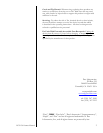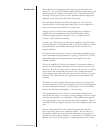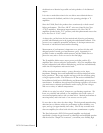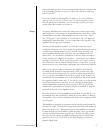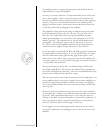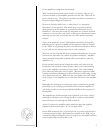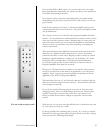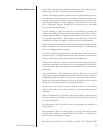
11
INT-150 Owners Manual
We go to a lot of trouble to make products reliable, and the failure rate of
our amplifiers is very low. This is small comfort to the few, but take it easy
and give us a call if you have problems.
People are interested in how long it takes for these amplifiers to break in.
Depending on the resolution of the rest of your audio chain, you may or
may not notice any break in of the amplifier beyond the first few hours
of operation. You will very likely notice the difference in sonic character
between cold and normal operating temperature over the first hour, so we
recommend letting these amplifiers warm up before any serious listening.
This generation of amplifiers warms up faster and is more bias-stable
during warm up than previous versions, but we still recommend an hour
for critical listening. At the factory we adjust the bias and offset values
initially and then after warm-up and then again after 48 hours, if necessary.
The “sweet spot” is a sink temperature between 50 and 55 degrees C., but
this is not critical, and will vary with your room temperature. You should
be able to put your hands on the heat sinks without undue discomfort for 5
seconds or so.
The amplifier has a thermal cutout that will disconnect AC power if the
temperature exceeds 75 degrees Centigrade. This thermal cutout should
never occur in real life. This is a very rare occurrence, and would indicate a
serious problem.
We have a general recommendation about interconnects, and speaker
cables: They should cost less than the amplifier, and contain at least some
conductive material. We have tried a lot of products and most work well,
but as a practical matter we cannot make blanket recommendations as to
your purchase of cables. Under all circumstances you should unplug power
cords before changing signal cables…. you’ve been warned!
The amplifier is not sensitive to source interconnects. It is also not
sensitive to radio frequency pickup, which allows some flexibility in
choosing source interconnects without shields, though shields are usually a
very good idea. For long runs balanced cables are highly recommended for
their inherent rejection of noise.
We prefer speaker cables that are short and stout. Oxygen-free copper and
silver are the suggested materials. If you find any really exceptional cable
made of gold, please gift us a couple hundred meters.
Fortunately this amplifier is not sensitive to the capacitive/inductive
character of some of the specialty speaker cables, so feel free to
experiment.
We have found that about 90 per cent of bad sounding cables are really
bad sounding connections, and we recommend that attention be paid to
cleanliness of electrical contact surfaces and proper connector fit.
Speaker Interface





